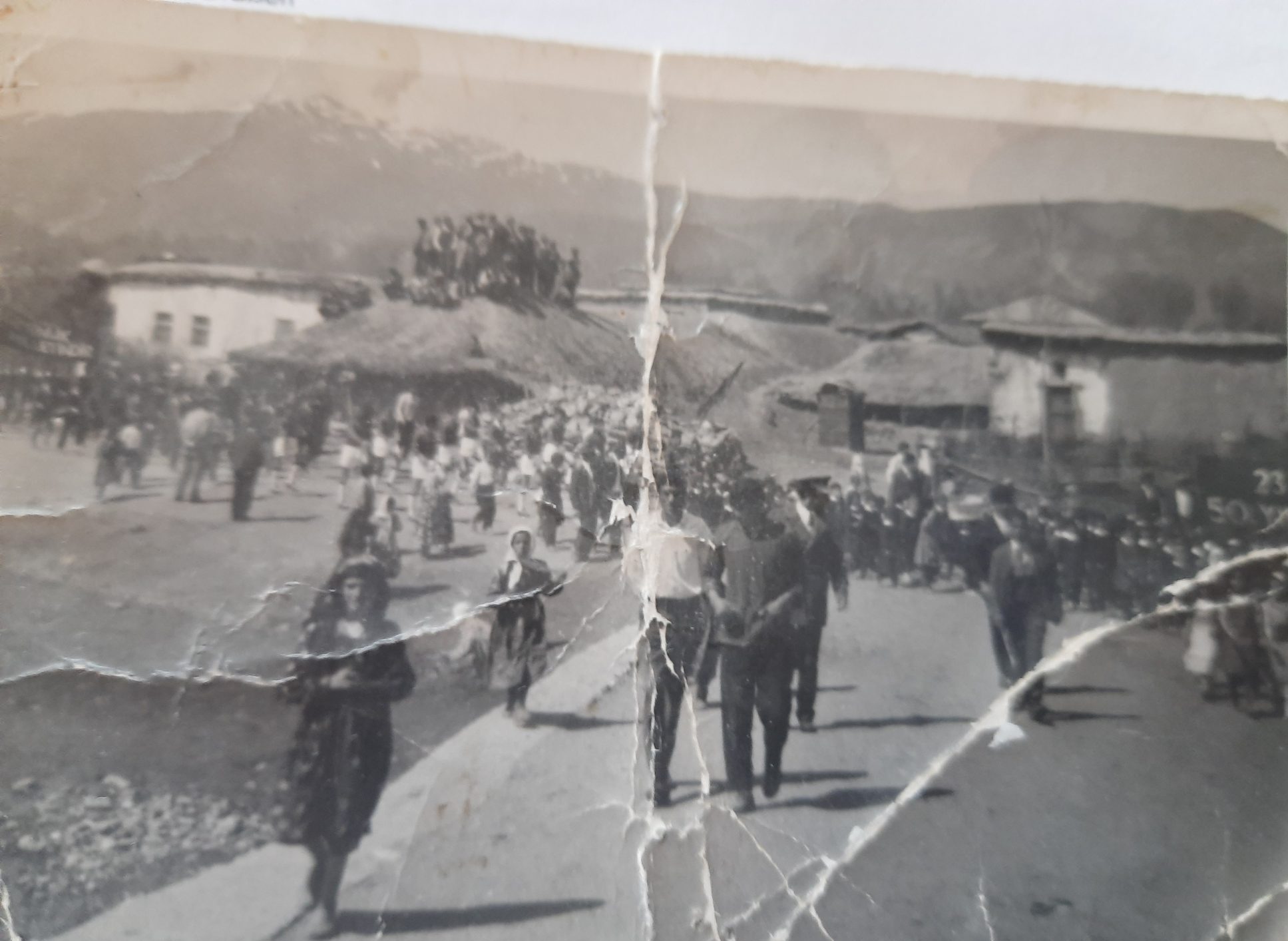Hasköy is located about 13 km southeast of the provincial capital Muş. The Karasu River flows north of Hasköy. Today, the previous village Hasköy is the main town of a county (İlçe) of the same name.
Toponym
The name Hasköy may derive from the Armenian word Kharts for swamp/wetland, which became Khars. The Kurdish placename is Dêrxas.
History
Near Hasköy was the ancient Carian city of Attuda (Greek Ἄττουδα). It maintained close relations with the neighboring city of Trapezopolis. Coin finds from the time of Augustus with the inscription Ἱερὰ Βουλὴ Ἀττουδέων show that the god Men was worshipped here.
Population
At the beginning of the 20th century, about 4,000 Armenians lived in the village, which had three churches.
Henry Finnis Blosse Lynch: “…one of the largest” Armenian villages in the Mush Plain
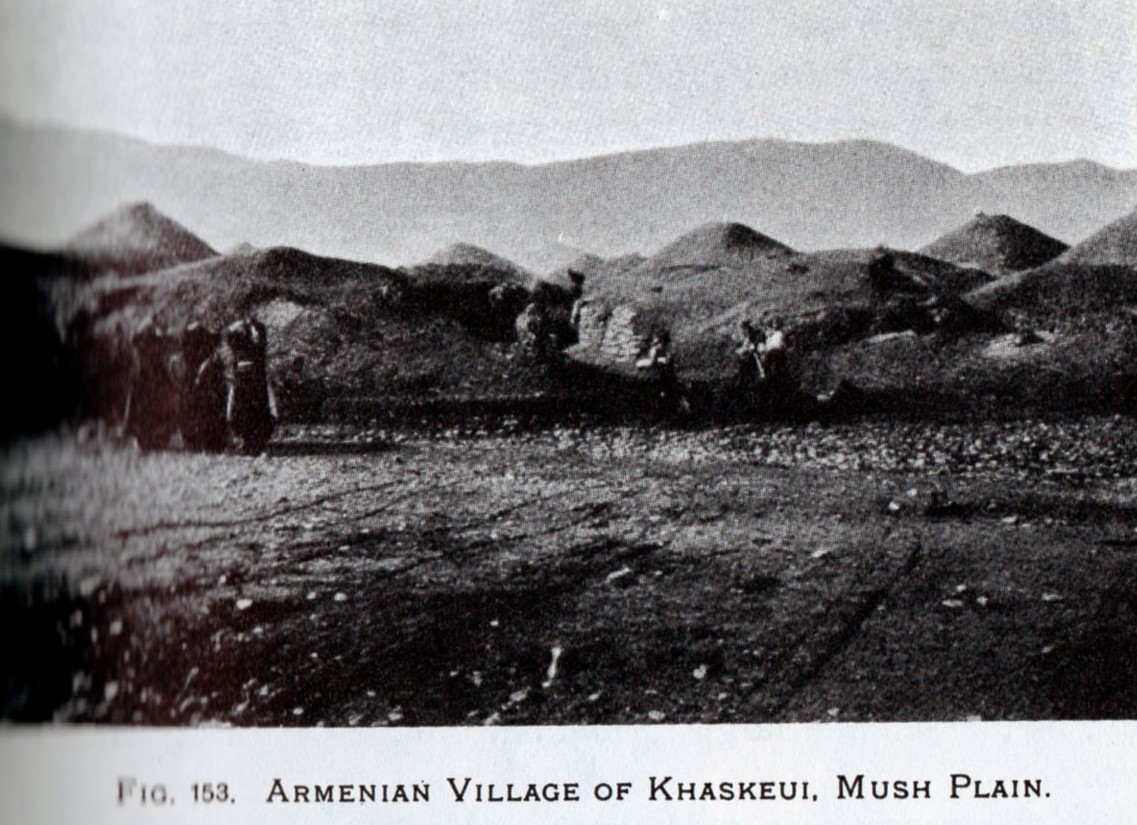
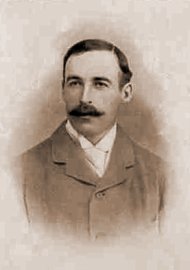 “The villages in the plain [of Mush] appeared to be for the most part Armenian, but some Armenian villages are in part inhabited by Kurds. We halted for a meal in one of the largest of these, the Armenian settlement of Khaskeui [Trk.: Hasköy]. It is a typical Armenian dwelling-place, resembling a series of ant-hills; but my illustration does not comprise the knot of venerable trees which adjoin it, an unwonted landmark in the expanse. In Khaskeui there are not less than 300 houses and 2 churches, besides ruins of more ancient sanctuaries. But the school had been closed by order of the Government, and only one per cent of the peasants could read or write. I found the priest an ignorant man; – poor fellow, he had been lately imprisoned on a summons for withholding taxes. If only Armenian patriots would see to the reform of the rural clergy, what an inestimable harvest the race would reap! The inhabitants of the village are a good example of Armenian peasantry – such broad shoulders, and massive hips! They were fairly well-to-do, some in easy circumstances. One is impressed by their resolute look.
“The villages in the plain [of Mush] appeared to be for the most part Armenian, but some Armenian villages are in part inhabited by Kurds. We halted for a meal in one of the largest of these, the Armenian settlement of Khaskeui [Trk.: Hasköy]. It is a typical Armenian dwelling-place, resembling a series of ant-hills; but my illustration does not comprise the knot of venerable trees which adjoin it, an unwonted landmark in the expanse. In Khaskeui there are not less than 300 houses and 2 churches, besides ruins of more ancient sanctuaries. But the school had been closed by order of the Government, and only one per cent of the peasants could read or write. I found the priest an ignorant man; – poor fellow, he had been lately imprisoned on a summons for withholding taxes. If only Armenian patriots would see to the reform of the rural clergy, what an inestimable harvest the race would reap! The inhabitants of the village are a good example of Armenian peasantry – such broad shoulders, and massive hips! They were fairly well-to-do, some in easy circumstances. One is impressed by their resolute look.
Khaskeui has an open site on the floor of the spacious plain, while Mush nestles under the wall of the southern range. (…)”
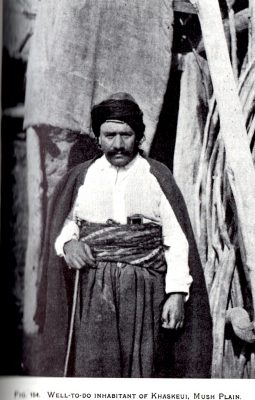
Excerpted from: Lynch, H.F.B.: Armenia: Travels and Studies. Vol. Two: The Turkish Provinces. (Reprint). Beirut: Khayats, Third edition, 1990, p. 166
Giyasettin Sayan: “All our neighbors were Armenians”
From Meya Farqin in the Silvan Plain to Dêrxas (Hasköy) in the Muş Plain
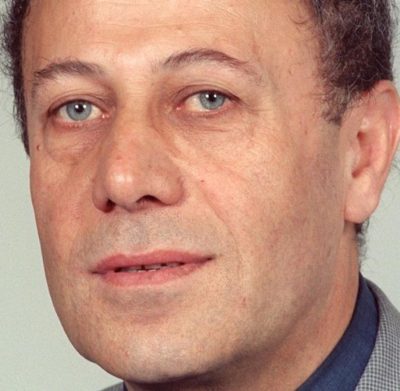
I belong to the Kurdish Bidri (Beleki) tribe. My ancestors come from the town of Meya Farqin Silivan (Aramaic ܡܝܦܪܩܝܛ Mîyafariqîn; Trk.: Silvan); today it is a district of Amed (Diyarbakır). Meya Farqin was the capital of the Mervani Kurds.
When the Abbasid Islamic state began to disintegrate, the state of the the Mervani Kurds and other Islamic states emerged between 990-1100 CE. Tribal wars and unrest in the Silvan region were the reason why my ancestors settled first in the mountainous region of Sasun in the village of Kavar (Armenian gavar – ‘district’) and Sexan a Gole and then around the year 1810 with the permission of the governor of Muş in the village of Kolosik north of Dêrxas.
My great-great-grandfather Bidirxe and his son Faris first built two water mills. Then they bought some land in Dêrxas-Sevak from an Armenian widow. Thus, my great-grandfather and part of his family were able to settle in Dérxas.
Life in Dêrxas
My great-grandfather Haci Faris had six sons and three daughters. He paid a lot of attention to the education of his children. Since there was no Kurdish school far and wide, he sent his children to an Armenian school and in parallel had privately hired some famous teachers like Sheikh Nureddin to broaden the general education of his children. My grandfather Hasan and his siblings also learned such languages as Persian, Turkish and Arabic, as well as to write in Kurdish.
Dêrxas
Dêrxas was an Armenian village. The villages in the surrounding area were also Armenian. There were two large Armenian Apostolic churches in Dêrxas. Since there was no mosque yet, my great-grandfather had to ride 7 km to the village of Til to pray there on Fridays.
According to the head of the Armenian Church of Dêrxas, there were about 400 families living in Dérxas around 1890. According to Özmen Özden, author of the book “Bileki Bidri ve şego asireleri” (Bileki Bidri and Shego Tribes), Dêrxas was an important community of Armenians.
My grandfather Hasan
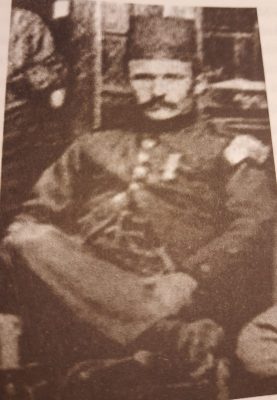
Born in 1880 and being the leader of the Bidri tribe, he was called up in 1911 by Sultan Abdülhamit II as a commander with the rank of Binbaşı (Major) in the Hamidiye Cavalry.
Hamidiye Cavalry
The Hamidiye Cavalry was raised mainly from Sunni members of Kurdish, Arab, and other tribes. In eastern and southeastern Anatolia, these were mainly Kurdish tribes.
In this way, the sultan wanted to gain control over the tribal peoples of his Empire on the one hand, and to protect the Empire militarily against the Russian threat on the Ottoman eastern border on the other.
Genocide in Dêrxas and the surrounding area
The Ottoman Ittihat ve Terakki government began the secretly prepared genocide against the Armenian people of Anatolia on 24 April 1915. The Armenians of Dêrxas and its surroundings were not spared from the massacres. The security forces and gendarmerie in Muş and Dêrxas massacred thousands of women, men and children. Armenian houses were looted and robbed.
I first learned about the scale of these massacres when I was still at school. I was paralyzed. I learned about it from the children of our Armenian neighbors. I then asked my parents about it and discussed it with them. One of my persistent questions was whether my grandfather Hasan had participated in the genocide as a commander of the Hamidiye regiments. So I learned from my Armenian neighbors as well as from my family, that my grandfather not only had not participated in the massacres, but always tried to save as many Armenians as possible in the Dêrxas. Thanks to my grandfather Hasan, many Armenians in Dêrxas remained alive and have hundreds of descendants today. In Dêrxas, no one could pressure Armenians. All our neighbors were Armenians.
However, since the 1970s, many Armenians from Dêrxas have moved to big cities in Turkey or emigrated to Europe.
The role of the remaining Armenians in Dêrxas
People of Armenian origin have significantly shaped life in my village during my childhood until now. They have enriched life in agrarian Dêrxas in all crafts through their skilled work: Painting, tailoring, carpentry, fabric making, pottery, agriculture, natural medicine, etc. In case of the slightest problem, people tried to find the solution from the Armenians, who were highly respected as advisors.
The Armenians owned two churches in Dêrxas. One church was converted into a mosque in 1930, the other church was demolished in the late 1970s and a school was built in its place. In 1925, the Kurdish Azadi (‘Freedom’) organization, to which my grandfather also belonged, had initiated a major uprising against the Turkish state. After the bloody suppression of the uprising, my grandfather and his brothers, as well as many other leaders, were tried for months in Bitlis before Turkey’s High Special Court for treason and rebellion. My grandfather and his brothers were not executed thanks to their friendly relations with the governor (vali) of Bitlis, Kazım Derih Pasha, but were sentenced to exile in Izmir. He was released after three years as part of the amnesty of exiled Kurdish insurgents and returned to Dêrxas. He died in 1931, when my father was only one year old, at the age of 43 after a serious illness.
From Dêrxas to Berlin
I was born in April 1953. In 1960, I was registered in the civil registry and started elementary school in Dêrxas. There I learned Turkish as a school language. In Muş I then attended the secondary school and the high school, from which I graduated with the Abitur.
In 1971, I came to the Federal Republic of Germany, to West Berlin. I learned German at the Goethe Institute, after which I attended the university preparatory college. In 1973 I was admitted to university studies. First I studied at the Technical University in Darmstadt, then I changed to the Technical University in Berlin, where I achieved the intermediate diploma in civil engineering. After that I changed to the University of Applied Sciences for Economics and studied Business Administration, which I finished with a diploma. Furthermore I studied Political Sciences at the Freie Universität Berlin and finished with a further diploma.
After that I worked 10 years in the social sector at the AWO (Arbeiterwohlfahrt – ‘Charity for Workers’). From 1995 to 2012 I was a member of the Berlin House of Representatives. The entire 16 years I was a member of the presidium and active in various committees, including the Interior Committee and Culture Committee of the Berlin Senate.
The situation in today’s Dêrxas
Dêrxas had about 2000 inhabitants at my school time. Many members of my tribe, who lived in the area of Sasun, the communities of Pencinaran and Kavar (Gavar), as well as in other communities and villages, were exposed to the attacks of the Pencinaran tribes during my grandfather’s lifetime. They did not endure the tribal attacks from Pencinaran (Sasun) for a long time. Therefore, my grandfather relocated many tribesmen to Dêrxas and neighboring villages with the permission of the governor of Mus.
Dêrxas became a municipality in 1968 and my uncle was elected
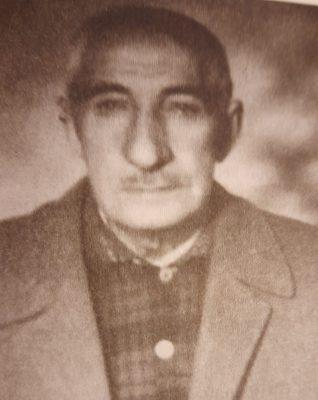
its mayor.
Since 1987, Dêrxas has had the rank of a district of the city of Muş and was given a mayor as well as a governor. Many offices were newly established in Dêrxas, first of all many security forces, police and army.
Economic situation of Dêrxas
Economically, Dêrxas has always been strongly influenced by livestock (cattle, sheep, chickens, geese). In 1970, about 4500 cow cattle and 12000 sheep were bred there. Another income was beekeeping, with which about 300 families were engaged. In the farming the cultivation of wheat, corn and barley was very common. Vegetable growing also played an important role.
Due to the rise of the district, many civil servants came to Dêrxas. In connection with this, there was an increase in renting and leasing, which provided an additional source of income for the population.
In 1966, a major earthquake destroyed many houses in Dêrxas. Instead of providing help and rebuilding the houses, the Turkish state used the agreement on the recruitment of workers from Turkey with the Federal Republic as an opportunity to preferentially send those affected to Germany. As a result of the recruitment agreement, about 8000 people from Dêrxas and the surrounding area have come to the Federal Republic to date. Since then, direct remittances from migrants and emigrants to their relatives have been another source of income in Dêrxas.
